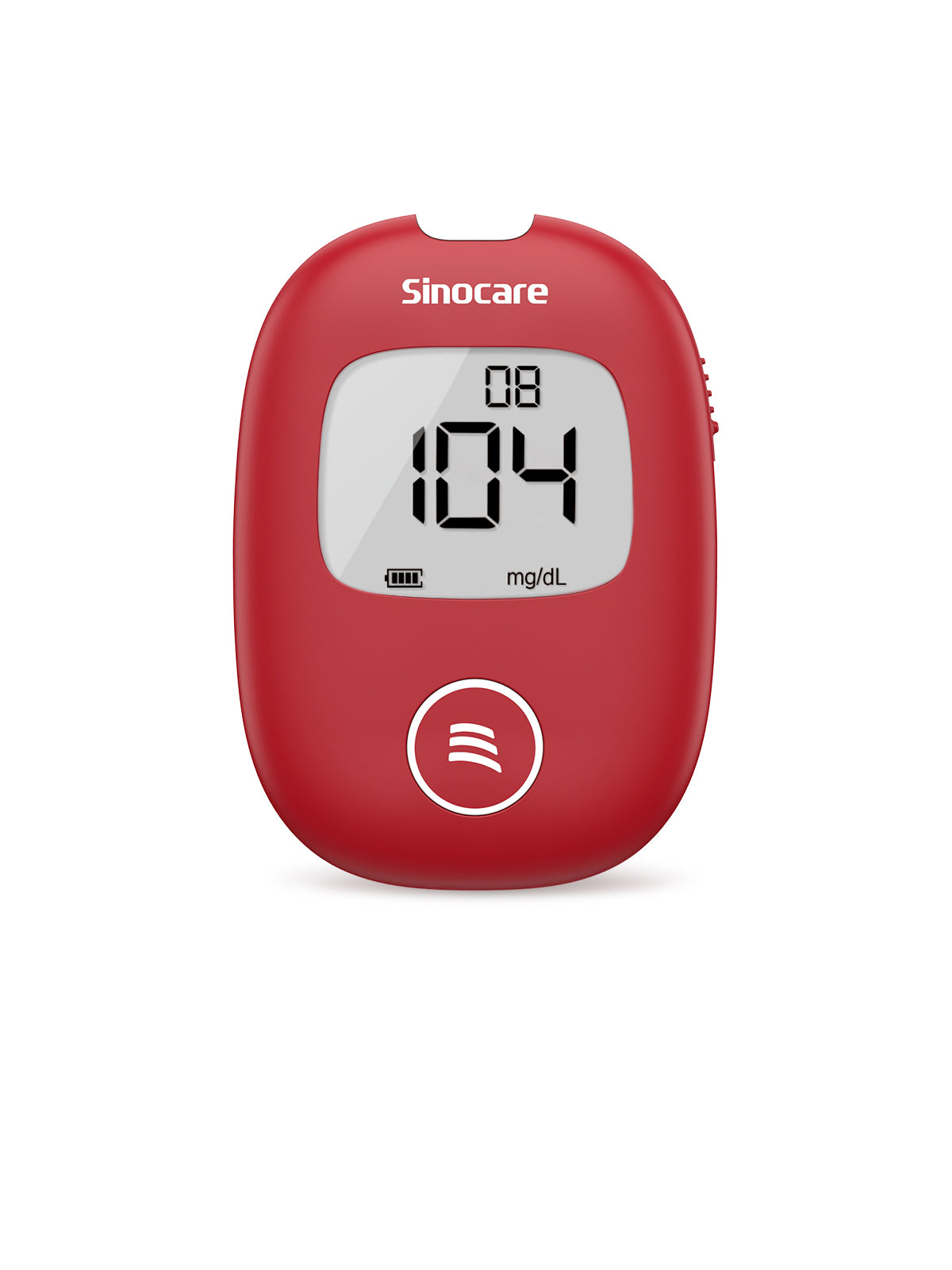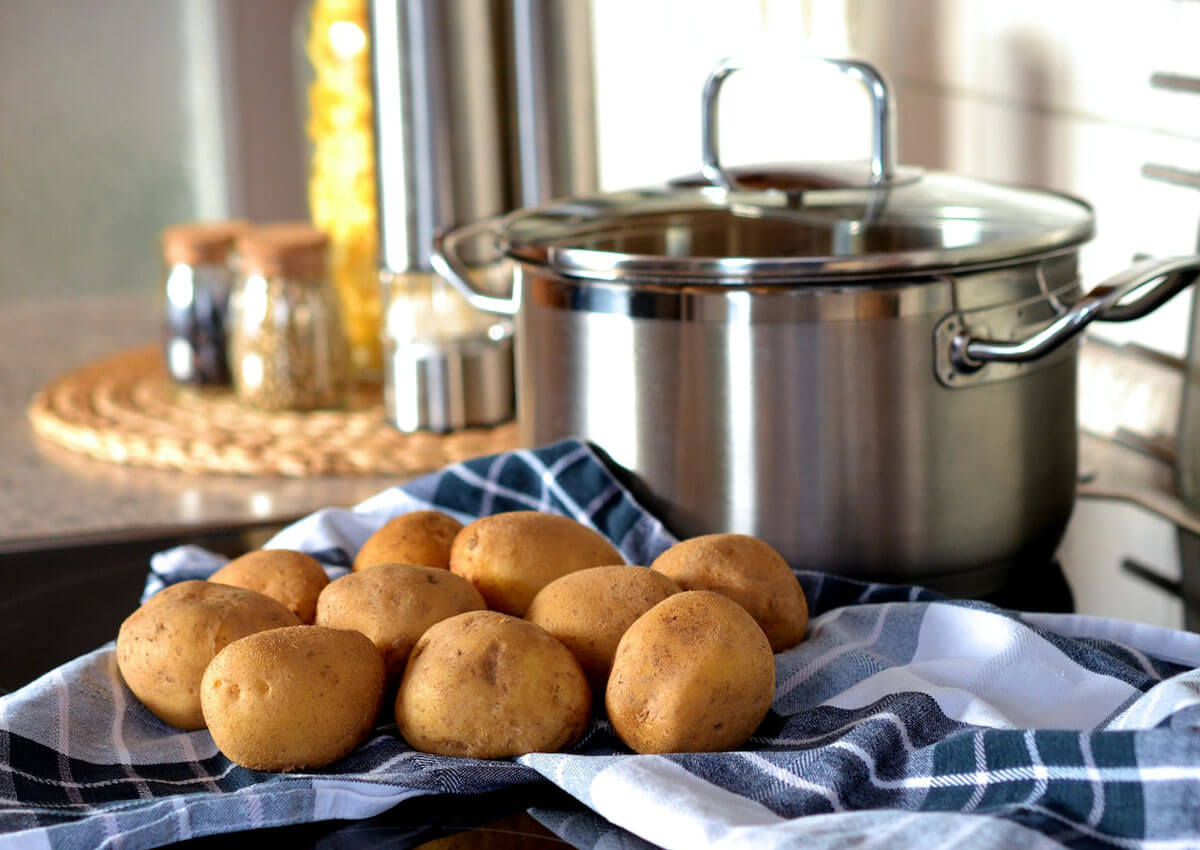With their hearty, comforting presence, potatoes have found a spot in almost every cuisine worldwide. Their diverse culinary applications make them a staple in numerous dishes, from simple, home-cooked meals to gourmet dining experiences.
However, for those managing diabetes, the humble potato can appear more as a challenge than a cherished food. But is it necessary to give up potatoes entirely? Let's answer that with a resounding No!
Managing diabetes is a journey, a continuous process of learning and adapting, and you don't have to say goodbye to your favorite foods. Instead, it's about understanding them better and modifying your approach to consuming them.
This includes the much-loved potato, which can still be a part of your diabetes-friendly diet despite its high carbohydrate content.
This article will teach the intricate dance between potatoes, carbohydrates, and diabetes.
Why are Potatoes not Healthy for Diabetics?
The American Diabetes Association (ADA) recommends tailoring the diet of a diabetic person according to their goals, daily expenditure, and current health status.[1]
A professional, specifically a registered dietician, should be consulted for a diet plan. People with diabetes can indeed include potatoes in their everyday meals. However, they must carefully manage their intake, particularly the overall amount of carbohydrates, including potatoes. This precaution is necessary because consuming too many carbohydrates can rapidly spike blood sugar levels, which could pose a health risk for those managing diabetes.
Another way to minimize any adverse effects of carbohydrates ADA recommends carbohydrate counting; this strategy helps people understand how many carbohydrates they eat and how it affects their blood glucose levels.[1] This method is also essential because it aids in managing blood sugar effectively.[1]
Potatoes can only become unhealthy for diabetic people if their consumption is uncontrolled and if individuals with diabetes don't plan their diet to include a balanced amount of protein, carbohydrates, and fiber.
Can I Eat Potatoes with Diabetes?
Yes. Potatoes are suitable for a balanced diet in a diabetic nutrition plan. And according to the Institute of Medicine (IOM), carbohydrates are needed for us to function well. That is because the executive functioning of the brain requires glucose as energy. [2]
The dietary allowance of IOM is 130 grams of carbohydrates daily, roughly three medium-sized potatoes. That estimation may vary depending on how you cook the potatoes and the types. [2]
Data obtained from the USDA's FoodData Central (2023) indicates that a medium potato has approximately:
- Calories: Around 110
- Carbohydrates: Around 26 grams
- Protein: Around 2-3 grams
- Fat: Nearly 0 grams
- Dietary fiber: Around 2-3 grams
- Sugars: About 1 gram
- Potassium: Around 620 mg
- Vitamin C: About 27 mg
- Iron: 6% of the daily value
Therefore, it's entirely OK to use potatoes as a staple ingredient in the nutrition regimen of someone with diabetes. They are not just a source of carbohydrates but also provide other valuable nutrients like fiber, potassium, and vitamin C. However, you should consider portion control and preparation methods to manage blood sugar levels properly.
Helpful tips to maximize the full benefits of potatoes in your cooking:
Tip 1: Eat with Skin
Before following this tip, thoroughly wash any dirt and residues on the potatoes before cooking. Eating potatoes with skin can have a lot of potential perks. For example, its skin can give you additional fiber, vitamins, and minerals. Secondly, the fiber boost can improve any digestion issues and helps in slowing the absorption of carbohydrates. And lastly, eating the potato with skin can give you more prolonged satiety or be full for a longer time, which could decrease your craving for more food.
Tip 2: Eat with Low-Glycemic (GI) Index Foods
The Glycemic Index categorizes carbohydrates on how they quickly raise blood sugar levels. Foods with a high GI (70 or more) are rapidly digested and absorbed, causing a faster and higher rise in blood sugar levels. Medium GI foods fall in the range of 56-69, and low GI foods, which are slowly digested and absorbed, have a GI of 55 or less. [3]
Take a look at some of the low-GI food that you can eat with potatoes:
- Lean Proteins: Proteins don't have a GI value because they don't contain carbohydrates. You can pair potatoes with chicken, turkey, fish, eggs, tofu, and low-fat dairy for a balanced meal.
- Non-Starchy Vegetables: These generally have a low GI and are high in fiber. Examples include broccoli, spinach, bell peppers, zucchini, tomatoes, cucumber, and lettuce.
- Legumes: Foods like lentils, chickpeas, and black beans are low-GI and high in fiber, and can help slow the digestion of the meal, thus lowering the overall GI.\
- Salads: A mixed green salad with various colorful veggies adds nutrients and fiber and helps balance the meal.
- Whole Grains: Whole grains like brown rice, quinoa, or barley have a lower GI than many refined grains and can create a more balanced meal.
- Healthy Fats: Avocados, nuts, and seeds add healthy fats and fiber to your meal without increasing GI.
Tip 3: Choose Sweet Potatoes (or Carisma Potatoes)
Exploring alternative sources of carbohydrates can also significantly transform your diet! Sweet potatoes can have other nutritional benefits than regular potatoes. For example, it has more fiber content which helps improve gut health, is rich in vitamin A, and has a relatively low GI. [4]
Tip 4: Avoid Frying
Frequent food frying can decrease their nutritional content and add unhealthy elements. That is because when oil is used for frying, especially when heated to high temperatures or used repeatedly, it can undergo a process known as oxidation, which can generate trans fats. Trans Fats are a type of unsaturated fat associated with the risk of heart disease.[5]
Diabetic individuals should consider other cooking methods, such as boiling, steaming, grilling, or baking. These methods don't require the excessive use of oil, thereby reducing the potential formation of trans fats and helping to maintain the original nutritional value of the food. Boiling and steaming can also help preserve the natural flavors and nutrients of the food without adding extra fat or calories.
FAQ
Is Jacket Potato with Cheese and Beans Healthy?
Jacket potatoes are another easy and fun way to enjoy your regular potatoes, but to consider them healthy, you need to look at the portion size, how you cooked it, and the ingredients you used.
To make jacket potatoes, you need potatoes, beans, and cheese. These elements can make or break your blood sugar levels. Diabetic people should ensure they are eating portion-controlled sizes and doing carbohydrate counting, as both potatoes and beans contain carbs.
Are Potatoes Complex Carbs?
Yes, we classify potatoes as complex carbohydrates. We categorize carbohydrates into two types: simple and complex. Simple carbohydrates spike blood glucose faster; meanwhile, complex carbs are digested and absorbed in the blood more slowly.[6]
Are Dry Potatoes More Diabetic-Friendly?
To make dry potatoes, cooking them should not have any additional oils or sauces, so it is either boiled, steamed, or baked. So yes, dry potatoes are diabetic-friendly because they have no added substances, they will have a low glycemic response, and this method preserves the natural nutrients of the potatoes.
Final Thoughts
In summary, potatoes can be part of a balanced, diabetes-friendly diet with careful attention to portion size, preparation methods, and overall meal composition. Rather than focusing on a single food item, remember that a healthy diet for diabetes management is about balance, variety, and moderation. Carbohydrate counting and glycemic index awareness can guide choices, but these tools are most effective within a whole-diet approach.
Experiment with different types of potatoes and cooking methods, pair them with low-GI foods and enjoy them in moderation. By adopting these strategies, you can continue to enjoy the delicious versatility of potatoes while managing your diabetes effectively. Remember, though, that individual responses to foods can vary, and it's essential to monitor blood sugar levels before and after meals to determine what works best for you. Always consult with a registered dietitian or healthcare professional for personalized advice.
References:
- American Diabetes Association (2016). Standards of Medical Care in Diabetes-2016 Abridged for Primary Care Providers. Clinical diabetes: a publication of the American Diabetes Association, 34(1), 3–21. https://doi.org/10.2337/diaclin.34.1.3
- Agarwal, S., & Fulgoni, V. L., 3rd (2021). Intake of Potatoes Is Associated with Higher Diet Quality, and Improved Nutrient Intake and Adequacy among US Adolescents: NHANES 2001-2018 Analysis. Nutrients, 13(8), 2614. https://doi.org/10.3390/nu13082614
- Vlachos, D., Malisova, S., Lindberg, F. A., & Karaniki, G. (2020). Glycemic Index (GI) or Glycemic Load (GL) and Dietary Interventions for Optimizing Postprandial Hyperglycemia in Patients with T2 Diabetes: A Review. Nutrients, 12(6), 1561. https://doi.org/10.3390/nu12061561
- Amagloh, F. C., Yada, B., Tumuhimbise, G. A., Amagloh, F. K., & Kaaya, A. N. (2021). The Potential of Sweetpotato as a Functional Food in Sub-Saharan Africa and Its Implications for Health: A Review. Molecules (Basel, Switzerland), 26(10), 2971. https://doi.org/10.3390/molecules26102971
- Dhaka, V., Gulia, N., Ahlawat, K. S., & Khatkar, B. S. (2011). Trans fats-sources, health risks and alternative approach - A review. Journal of food science and technology, 48(5), 534–541. https://doi.org/10.1007/s13197-010-0225-8
- Robertson, T. M., Alzaabi, A. Z., Robertson, M. D., & Fielding, B. A. (2018). Starchy Carbohydrates in a Healthy Diet: The Role of the Humble Potato. Nutrients, 10(11), 1764. https://doi.org/10.3390/nu10111764










Leave a comment
All comments are moderated before being published.
This site is protected by hCaptcha and the hCaptcha Privacy Policy and Terms of Service apply.